Grown As Hedging, Lavender Can Fulfil A Range Of Functions Along Garden Edges


Elizabeth is a Permaculture Garden Designer, Sustainability Consultant and Professional Writer, working as an advocate for positive change. She graduated from the University of St. Andrews with an MA in English and Philosophy and obtained a Diploma in Applied Permaculture Design from the Permaculture Association.
Reviewed By COLIN SKELLY

Colin is a Horticulturist and Horticultural Consultant with experience in a range of practical and managerial roles across heritage, commercial and public horticulture. He holds the Royal Horticultural Society’s Master of Horticulture award and has a particular interest in horticultural ecology and naturalistic planting for habitat and climate resilience.
Contributions From PATRICK FAIRWEATHER

Patrick is the MD of Fairweather’s Nursery, which is home to a Plant Heritage National Collection of Agapanthus. Their Allium cultivar won the HTA Plant Of The Year Award in 2021 and came 2nd in the same category at the Chelsea Flower Show in the same year. Patrick is also the Chair of the RHS Agapanthus AGM trials.

Julia is the Head Gardener at Yorkshire Lavender, a lavender farm based in West Yorkshire that is home to over 60 acres of land that is adorned by a huge array of lavender varieties and other herbs.
IN THIS GUIDE
LAVENDER GUIDES
Companion Plants
Cuttings
French Lavender
Harvesting
Lavender Hedging
Pruning
Varieties
Winter
Lavender hedges are truly beautiful, enriching spaces with their beauty and delightful scent.
Not everyone will be able to grow and maintain a lavender hedge in their garden, but where the conditions are suitable, lavender hedges can be a great choice.
They can be used to line beds or borders, demarcate different garden zones, or along the edges of pathways or patios.
“I love to plant lavender hedges lining a path so that it forms a neat edge during the winter, but just enters the path area when in flower,” says Master Horticulturist Colin Skelly.
“This creates a fantastic fragrance as people brush against the flowers or drag their hands through the flowers.”
Why Create A Lavender Hedge?
“Lavenders are quintessentially British and are loved by bees and other pollinators,” says the MD of Fairweather’s Nursery, Patrick Fairweather.
“There is nothing like brushing against their fragrant flowers in summer.”
Lavender does not just look and smell delightful.
This is a flowering herb which also has a wide range of other uses.
In garden design, it is always a good idea to make sure that you think about including elements which can fulfil as many different functions as possible.
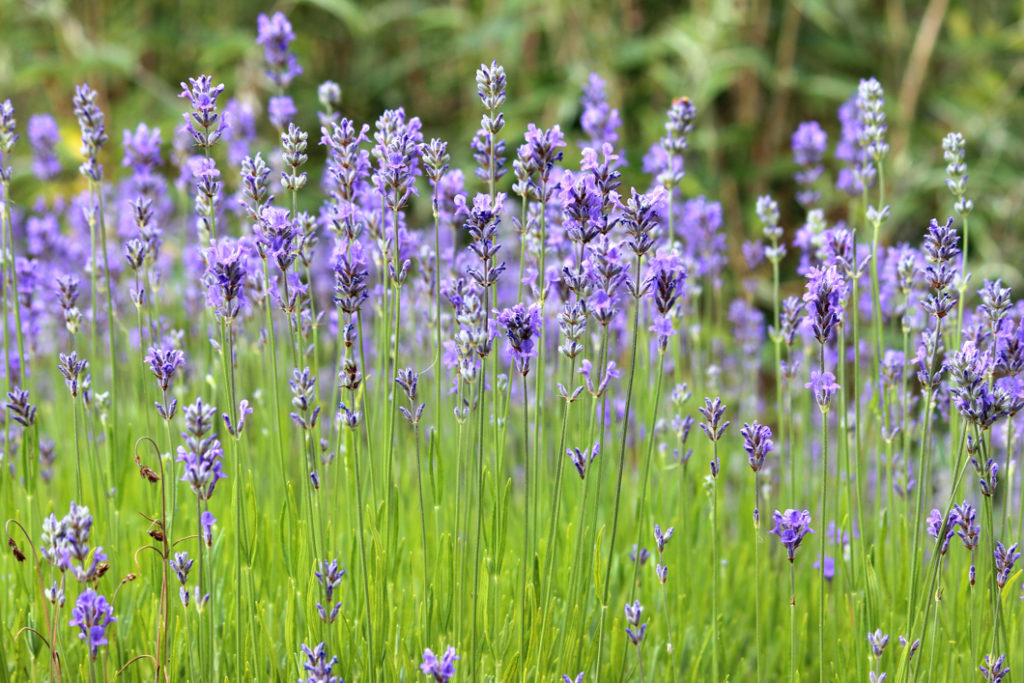
Lavender is certainly a plant which can fulfil a wide range of functions, as it can be useful in the garden itself and also has many uses within your home.
Here are just some of the reasons why creating a lavender hedge can be such a wonderful idea:
- Lavender is an evergreen shrub which will look good all year round.
- It is a low-growing, neat-looking hedge or bed edging which will not get out of hand.
- It flowers for a relatively long period over the summer months, bringing visual and olfactory appeal.
- The flowers also bring plenty of pollinators and other valuable insect life to your garden, and their scent may confuse, distract or potentially repel certain pest species.
- Lavender also provides wonderful cut flowers for displays inside your home.
Varieties For Hedging
If you have determined that a lavender hedge is a right choice for your garden, then the next decision you will have to take is which type of lavender to grow.
“L. x intermedia Lavenders like ‘Phenomenal’ make dramatic hedges with long flower spikes and large silvery leaves,” says Patrick.
You might also consider:
English Lavender
Lavandula angustifolia cultivars include:
- ‘Munstead’
- ‘Hidcote’
- ‘Arctic Snow’
- ‘Little Lady’
- ‘Nana Alba’
Lavandin
Lavandula x intermedia is a hybrid type that is slightly less hardy than the above.
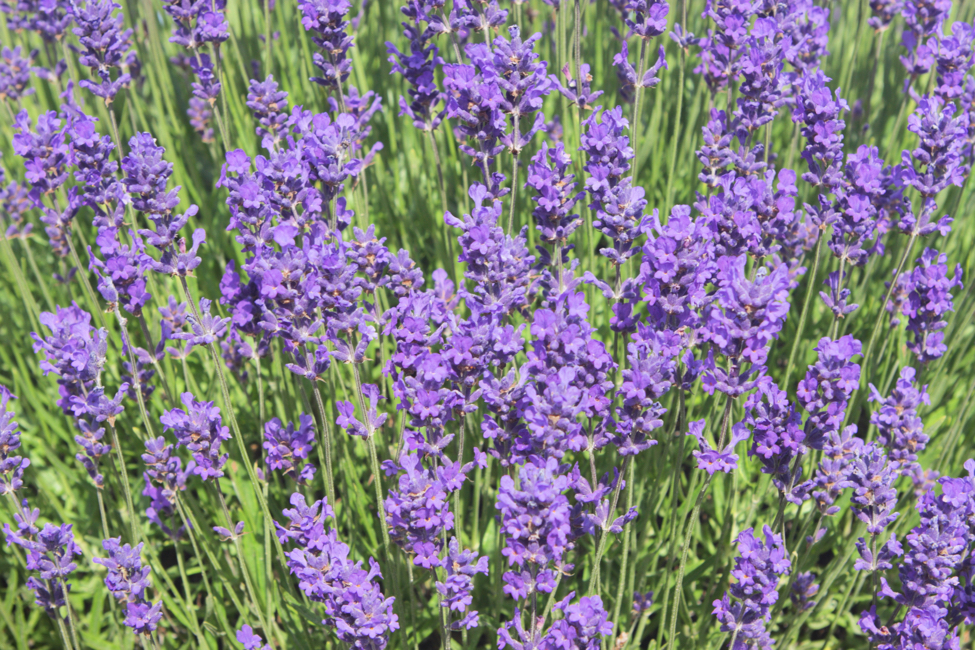
It is a cross between L. angustifolia and L. latifolia.
French Lavender

L. stoechas is notably more tender than both of the above and is not typically the best choice for a lavender hedge in the UK.
However, with its conspicuous bunny-ear-like bracts and longer flowering period, it could be an option to consider in particularly warm and sunny southern gardens.
Lavender Alternatives
One alternative to lavender to consider for hedging in similar conditions, either instead of or in addition to lavender plants, is hyssop.
This does not have as delightful a smell as lavender but is a useful herb, which makes good hedging and was commonly used in Tudor knot gardens.1Larson, R. (2018, October 28). The Early Tudor Garden (circa 1490-1550). Tudors Dynasty. Retrieved March 21, 2023, from https://tudorsdynasty.com/the-early-tudor-garden-circa-1490-1550/
Germanders are another plant suitable for low hedging or bed edging in a sunny and free-draining spot.
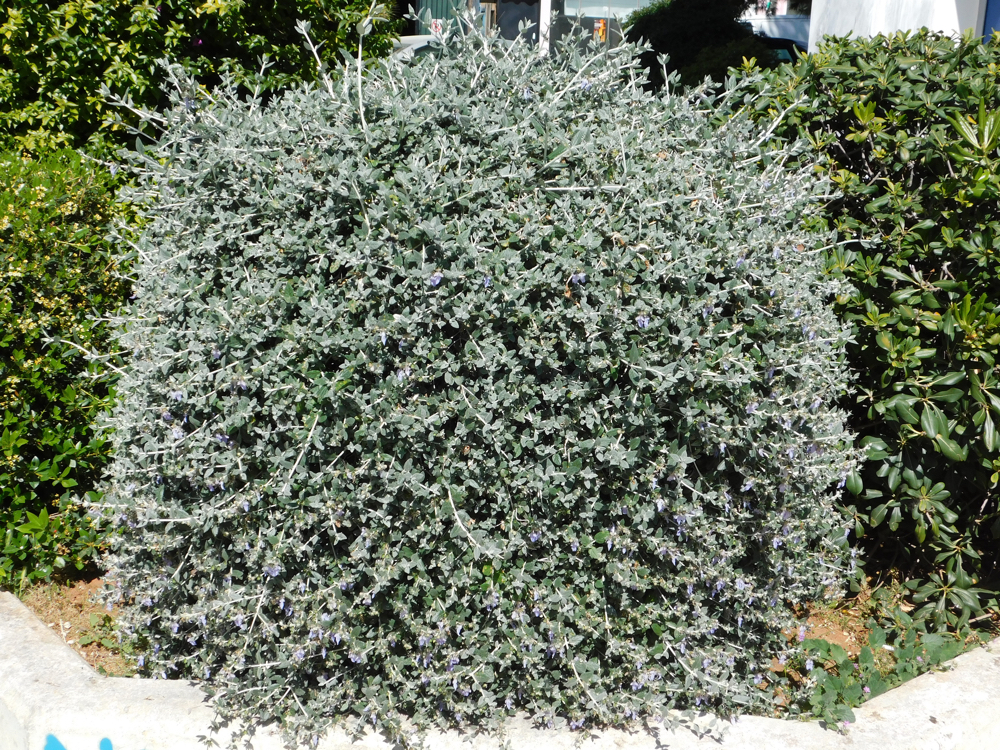
Teucrium x lucidrys has small pink flowers and looser Teuchrium fruiticans has lavender-purple flowers; both are also great for bees and pollinators in your garden.
If you have heavier soil, or conditions in your garden that are not ideal for a lavender hedge, you can still achieve a similar look using different plants.
Nepeta is another flowering herb which can look similar to lavender and also help with bringing beneficial insects to your garden.
This is perhaps the best option for those in cooler, more northern areas, who may struggle to achieve a successful lavender hedge in their garden.
Where To Grow A Lavender Hedge
Before you rush out to buy lavender for a lavender hedge, it is important to understand where such an element can thrive, and where it may not.
It is important to make sure that the site where you are considering placing a lavender hedge is suitable for the purpose.
Lavender needs a site in full sun, plenty of warmth and, most crucially, friable and free-draining soil.
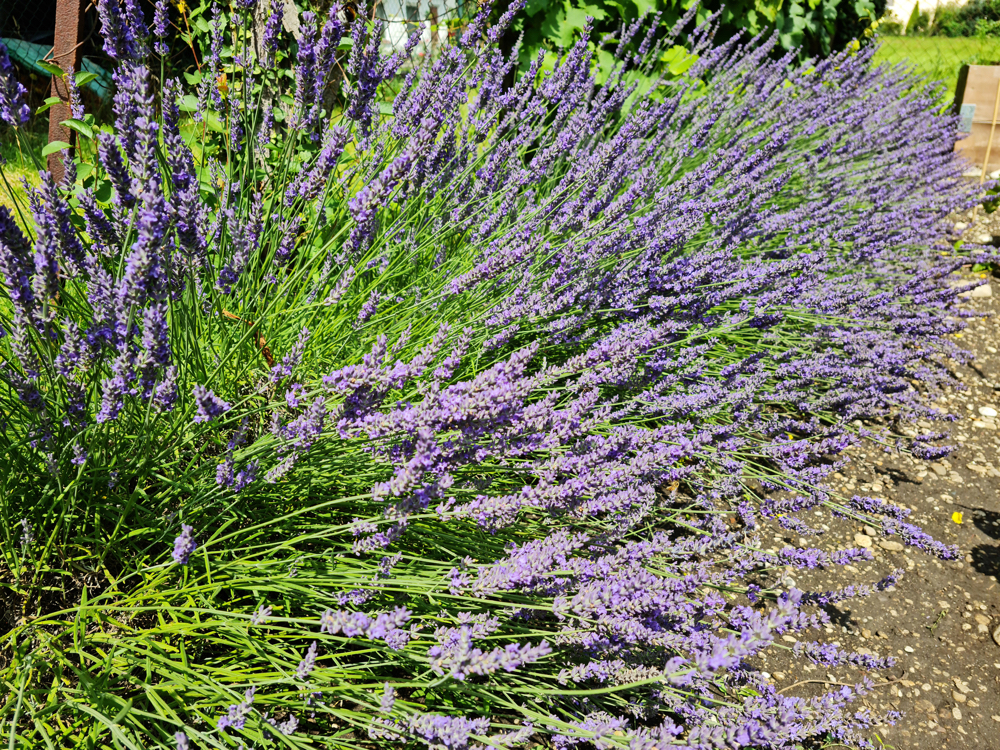
These plants are not suited to areas with heavy clay soil, or to areas where waterlogging can become an issue.
Above all, this Mediterranean plant cannot handle having ‘wet feet’.
“Whether you’re growing lavender as hedging or in pots or borders, much of the advice we give is the same,” says Julia Snowball, from Yorkshire Lavender.
“Plant them in full sun and ensure the soil is well-drained and not too rich.”
If the soil and conditions in your garden are suitable for growing lavender then you should think next about the layout of the space, and where lavender hedges might be beneficial.
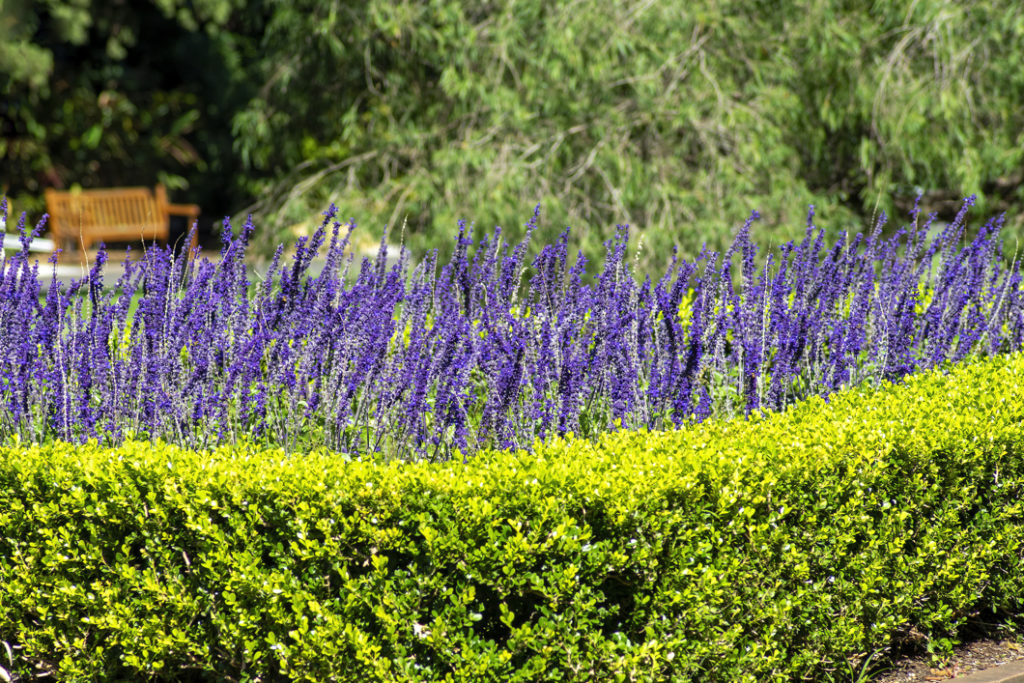
For example, you might place lavender:
- Close to a seating area where the attractive flowers and their fragrance can be admired.
- Along a pathway or along border edges, so you can enjoy the look and smell of the lavender as you pass by.
- As a boundary for a food-producing annual kitchen garden, where pollination services are required.
- Around the edges of a bed used to grow other culinary herbs.
- As a boundary around the sunny side of a fruit-tree guild or forest garden area to bring in more beneficial insect life to the system.
Preparing The Site
Once you have chosen your site and your lavender type, the next job is preparing the planting area.
First of all, it is a good idea to amend the soil with plenty of organic matter, to improve fertility and ensure the right balance between moisture retention and drainage.
Top dress rather than digging or tilling in this material to keep the soil web intact and healthy.
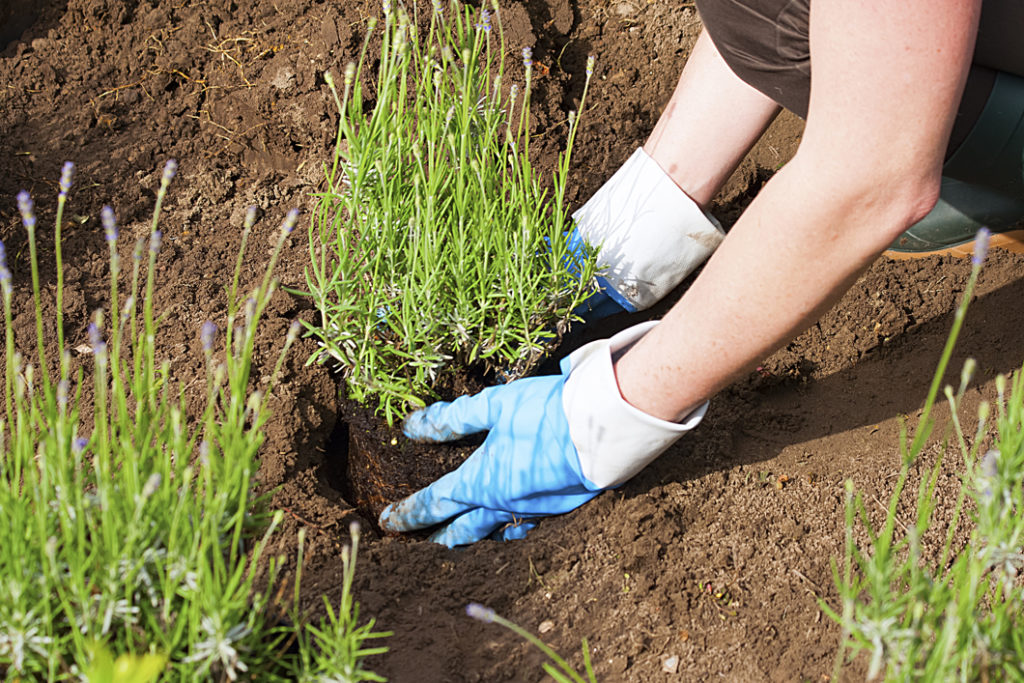
It is also a good idea to mark out the locations where you would like your lavender hedges to run.
If you want to ensure straight lines, then this can be achieved with a string and a couple of stakes inserted into the ground.
To make curved shapes, you can mark them out with string, or a garden hose laid on the ground, or you can even mark out the lines with sprinkled flour.
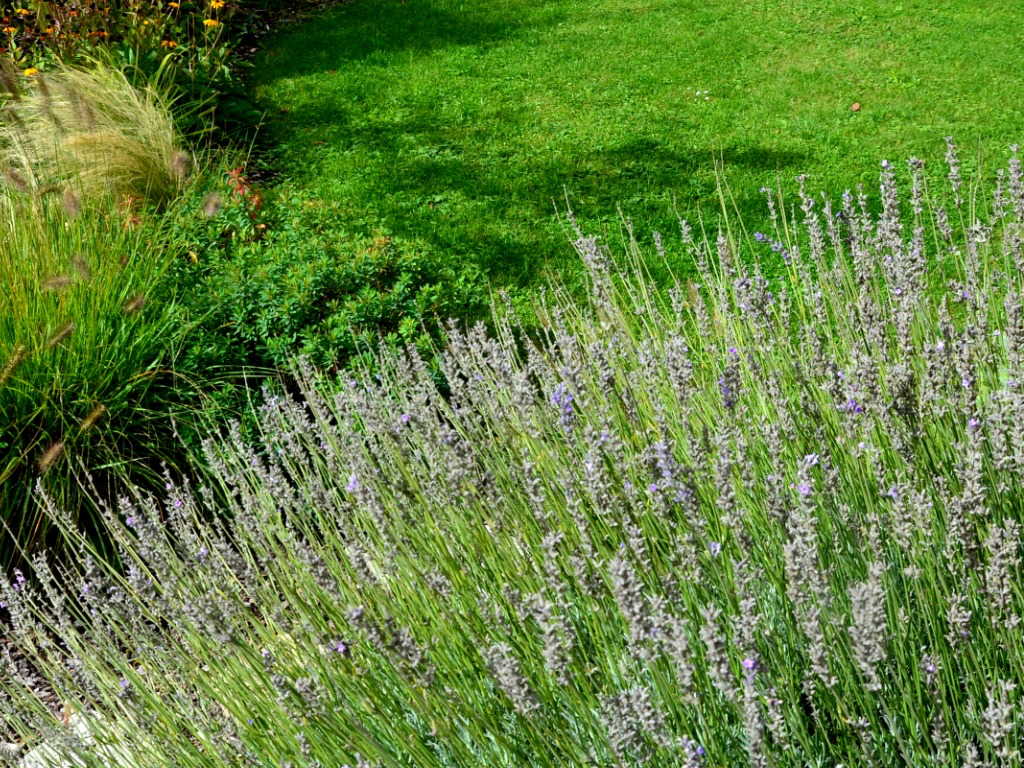
Ideally, lavender hedges should be planted in ridges or berms raised slightly above the surface of the surrounding pathways, so a no-dig approach can be beneficial.
This allows water to drain freely from around the base of the plants, so creating these raised areas with homemade compost or other similar organic materials can be ideal.
When & How To Plant
“The best time to plant a lavender hedge is September to November, while the soil is still warm enough for the roots to become established before winter,” says Julia.
Planting in early autumn gives the lavender plants the opportunity to establish strong, healthy root growth before colder weather arrives.
Lavender can also be purchased and planted out earlier over the summer months, but transplantation will usually be less stressful to the plants if carried out once the weather gets a little cooler.
“Water the lavenders when you plant them, then once a week for the next three weeks, unless there’s a spell of wet weather,” Julia explains.
“After this, the plants should need no further watering.”
Lavender plants can be placed in a single row to create thinner hedges, or doubled up and planted in double rows.
Ideally, it is best to plant your lavender on a ridge or berm, raised about 15cm from the surrounding soil and 20-25cm wide, or around double that width if you would like to create a double row.
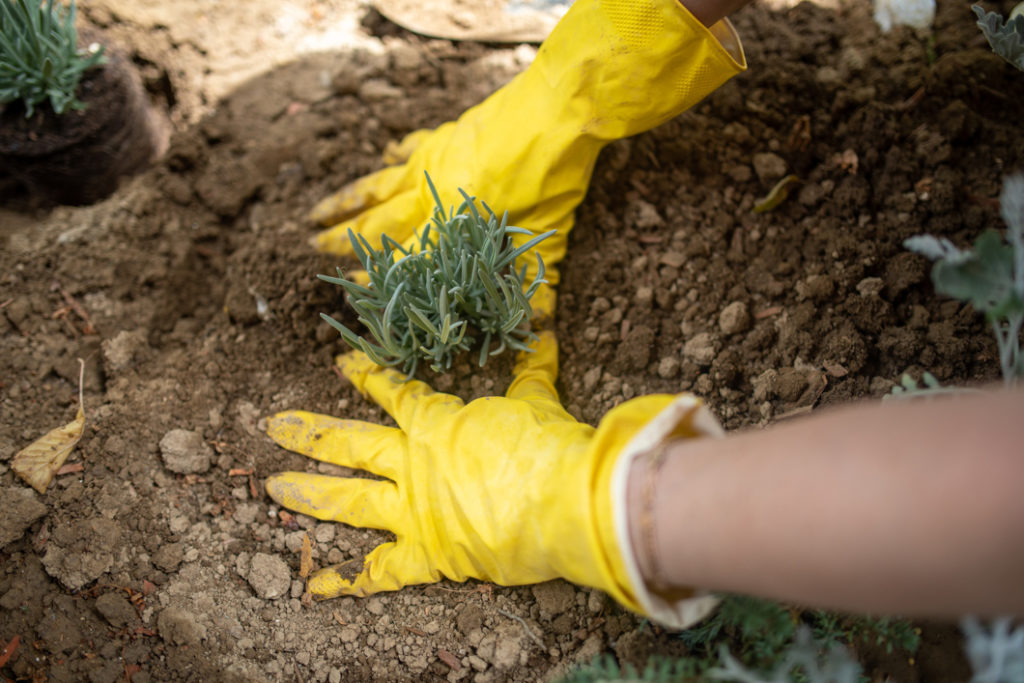
As a general rule of thumb, it is best to place plants around 25cm apart.
Hedgerows made with larger plants may create an impact, but choosing smaller plants will usually mean that your hedgerow establishes more quickly.
If you are adding more than one row of plants for your lavender hedge, the second row should be staggered, so that each plant is just behind the spot between two plants in the first row.
You may wish to add gravel, small pebbles or similar around the base of the plants to improve surface drainage and reduce weed competition, or simply for visual appeal.
However, this is not strictly necessary.
Ongoing Maintenance
“Lavender makes a great hedge, but it will only look good in winter if it is pruned immediately after flowering in late summer to help avoid it from going woody,” Patrick says.
“It’s especially important to start pruning young plants from an early age.
“Always leave 2 pairs of leaves below where you cut and never prune into old wood where there are no leaves below the cut mark.”
Lavender hedges should be pruned each year to maintain their shape.
When lavender is not pruned, the plants can become straggly and woody after a few years.
Typically, lavender is pruned in late summer or early autumn after the flowers fade, though plenty of flowers may already have been harvested from the hedge before this time.
Typically, you can cut back harder, especially when dealing with English lavender, and I’d recommend aiming to remove around one-third of the length of each stem.
References
- 1Larson, R. (2018, October 28). The Early Tudor Garden (circa 1490-1550). Tudors Dynasty. Retrieved March 21, 2023, from https://tudorsdynasty.com/the-early-tudor-garden-circa-1490-1550/
